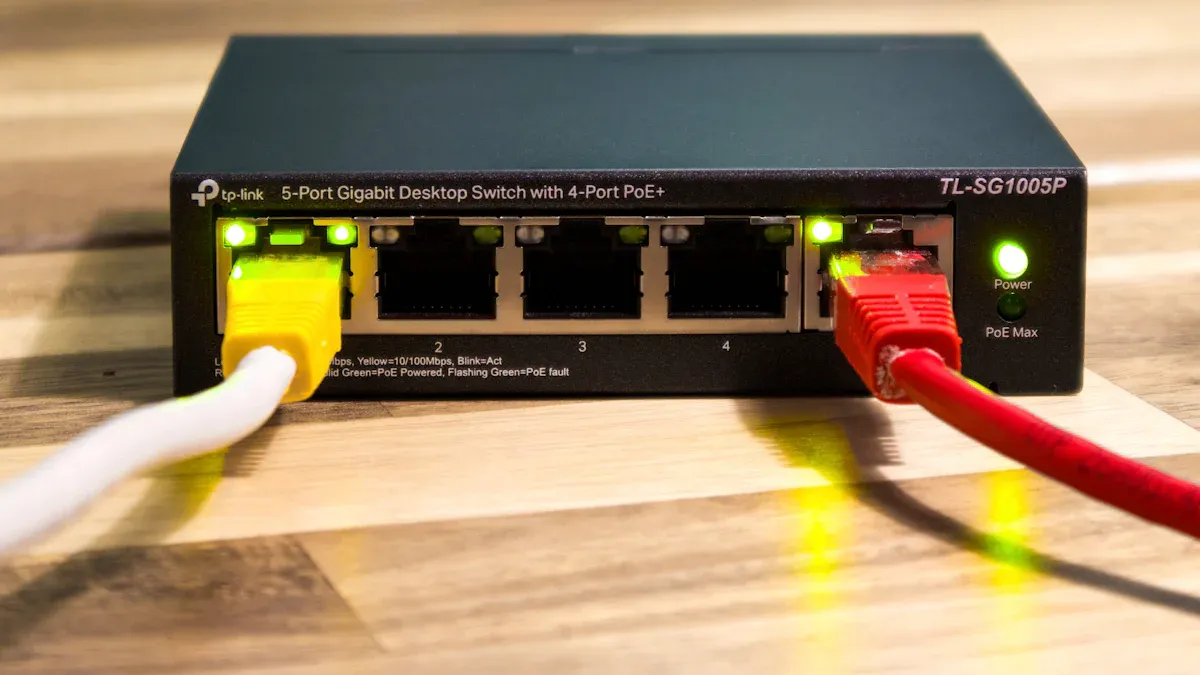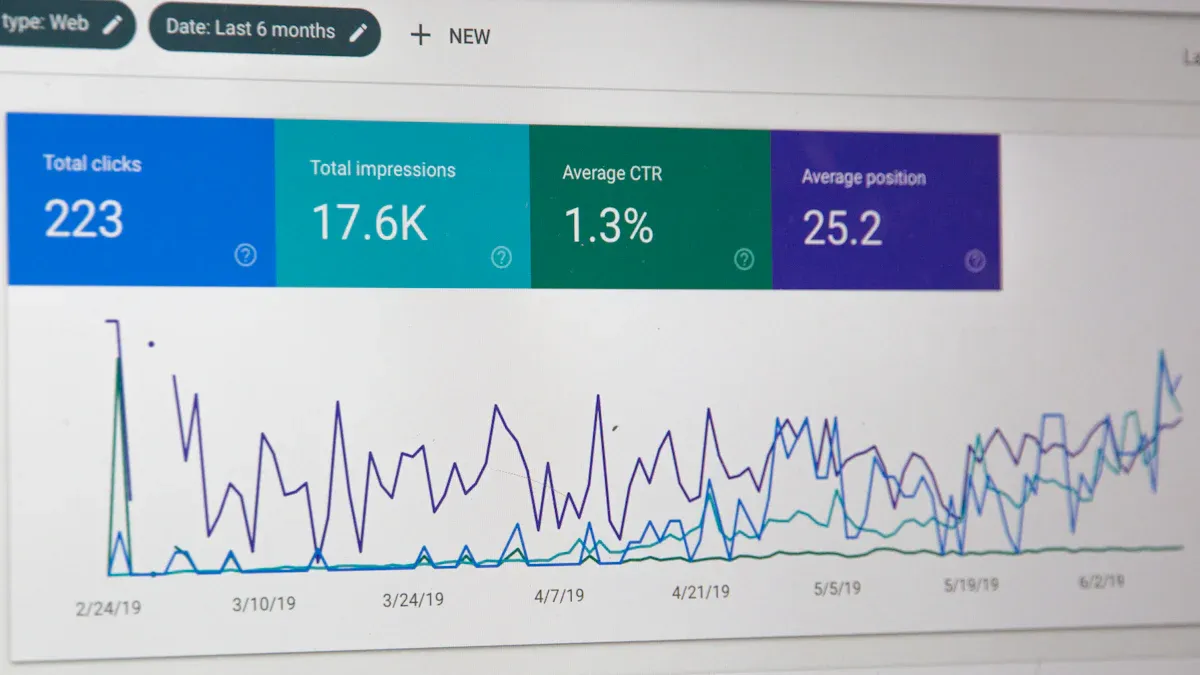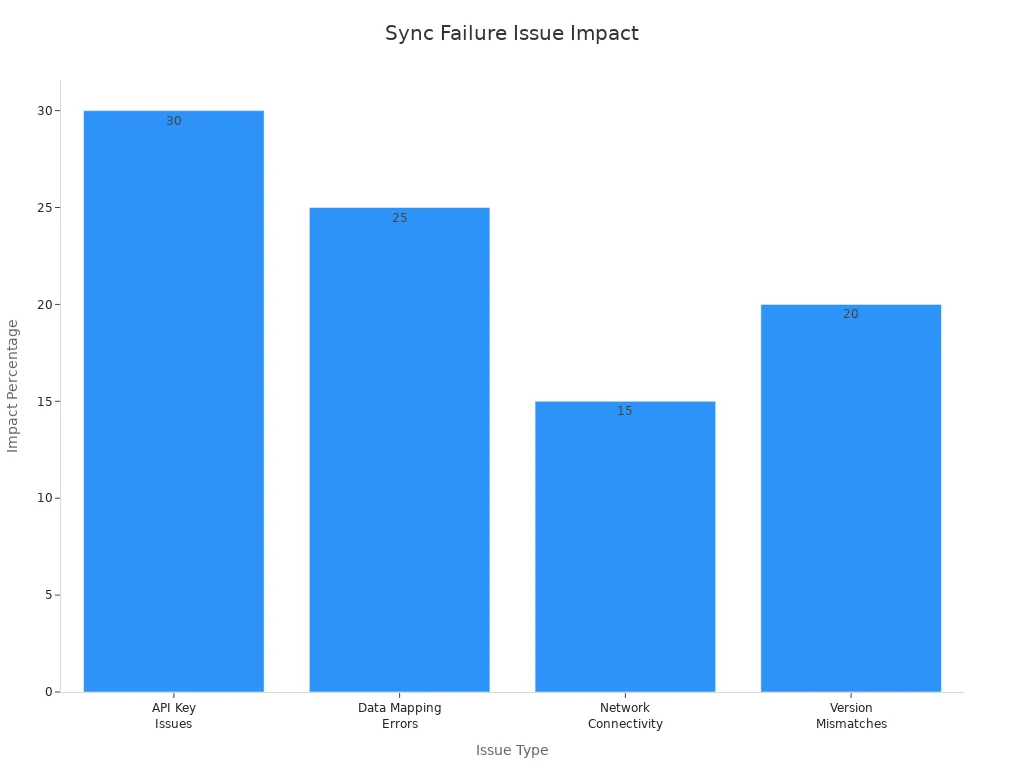Sub-Second Data Sync for E-Commerce Dashboards

You need quick and trustworthy data to run your e-commerce business. Sub-Second Data Sync means updates, like customer details or inventory changes, move right away between your systems. This keeps everything correct and up to date. Your team and your customers always see the same information.
Real-time sync helps your business stop data silos and manual mistakes. It keeps your inventory, pricing, and order status current. This leads to smoother work and happier customers.
Benefit Type | Description |
|---|---|
Data Accuracy | 67% of leaders do not fully trust the information that guides their choices. Reliable data is important. |
Customer Experience | Companies said better customer experience was the top benefit from ERP integrations in 2024. |
Key Takeaways
Sub-Second Data Sync updates your e-commerce data very fast. It takes less than one second. This keeps your information right and up to date.
Real-time updates make shopping better for customers. They get product details right away. This stops items from being sold too much. Shoppers feel happier.
The right tools and plans for data sync help your business grow. You can make smart choices with the newest data.
Use strong security steps like encryption and multi-factor authentication. These protect customer data during fast syncs.
Check your data sync often to find problems early. This helps your business run smoothly as it gets bigger.
Sub-Second Data Sync Benefits

User Impact
You want shopping to be easy and quick for customers. Sub-Second Data Sync helps by making sure all info is always current. When people look at your site, they see product details and inventory that update right away. This makes them trust your site and keeps them interested.
Instant product changes stop shoppers from getting confused.
Fast sync keeps inventory right, so no one buys sold-out items.
Quick updates on orders and products help shoppers feel important.
Sub-Second Data Sync also lets you use real-time personalization. Your site can show shoppers things they like, based on what they do now. This keeps them looking and can help you sell more.
Companies using real-time data see 40% more happy customers and 35% more customers who come back. Real-time personalization can also help you get up to 30% more sales.
Business Value
Sub-Second Data Sync does more than help customers. It helps your business grow and work better. You can make choices fast because you always have the newest data. Your team can see trends, fix issues, and act as things change.
Real-time ETL gives answers in less than a second, not hours.
Seamless CRM data sync helps mid-sized companies grow much faster.
Always up-to-date data helps AI and machine learning work better.
Here are some real examples:
Industry | Use Case Description | Business Impact |
|---|---|---|
Hotel Industry | A hotel chain used Data Cloud for upgrades at check-in. | |
Appliance Support | Tech support agents used real-time data to fix problems fast. | Faster fixes and better service. |
Airline Industry | Airlines rebooked frequent flyers right after cancellations. | Happier customers. |
Using Sub-Second Data Sync gives your business a big advantage. You can meet customer needs, keep things running well, and grow faster than others.
Key Challenges

Speed & Latency
You want your dashboard to show updates right away. But slow networks can make updates late. Even a short wait means you might miss new sales or inventory. Different systems move data at different speeds. For example:
System Type | Latency Characteristics | Suitability for Sub-Second Sync |
|---|---|---|
Reverse ETL | Works almost in real-time with planned batch updates | Not suitable |
Full Operational Sync | Built for low delay, aiming for seconds or less | Suitable |
To get true Sub-Second Data Sync, you must choose the best system. You should use smart ways to move data fast. WebSocket or MQTT can help make quick connections. You can send only what changed, not everything. Compression makes data move faster. Event-driven designs and caching also help data move without waiting.
Reliability
Your data must be right every time. Problems happen if your e-commerce platform and ERP or CRM do not match. Sometimes, data formats are not the same. Sometimes, systems do not work well together. Here are some common problems:
Data formats that do not match
Platforms that do not work well together
You can fix these by making sure all systems use the same data setup. Test your sync often to catch mistakes. Using event-driven designs and load balancing also helps keep your data correct.
Security
You need to keep customer and business data safe. Hackers look for weak spots, especially when data moves fast. Use strong login steps, like multi-factor and role-based access. Encrypt your data when it moves and when it is stored.
Tip: Use TLS to protect data as it moves and AES to protect stored data.
You must also follow rules like GDPR and CCPA. These laws say you must know what data you collect and how long you keep it. You must get user permission. Check your data steps and set clear rules for keeping data. This keeps you legal and helps customers trust you.
Implementation Strategies
Architecture Choices
You need the right setup to make data move fast and stay correct. There are two main ways to get sub-second speeds: Change Data Capture (CDC) and streaming data pipelines. Each way works best for different business needs. You can see how they compare in this table:
Architectural Model | Description | Best For | Challenges |
|---|---|---|---|
Change Data Capture (CDC) | Gets real-time changes from databases for quick updates. | Companies updating systems or needing fast sync. | Needs special tools for low-impact CDC. |
Streaming Data Pipelines | Handles data right away for instant checks and actions. | Real-time fraud checks and showing custom info. | Streaming data can be hard to manage. |
You can also use microservices and event-driven designs for real-time sync. These setups help your systems share info quickly and stay current. Here are some ways these designs help:
Event-driven design lets microservices send updates right when things change.
Data replication copies changes from one service to another with CDC, so all systems match.
Event sourcing keeps a list of every change, so you can fix your data if needed.
Picking the right setup gives you a strong start for Sub-Second Data Sync.
Tools & Tech
There are many tools to help you sync data in real time. Each tool is good at speed, growing with your business, or connecting to your systems. The table below shows how some top tools compare:
Tool | Speed | Scalability | Ease of Integration |
|---|---|---|---|
Estuary | Sub-second latency | Good for both small and big jobs | Needs extra tools for changing data |
Talend & Stitch | Fast to set up | Handles all data types | Over 140 connectors, easy pricing |
Informatica PowerCenter | Works well | Strong at changing data | Hard to set up, needs experts |
Microsoft SSIS | Good at changing data | Not great for cloud | Needs Windows and licenses |
Rivery | No-code setup | Can do reverse ETL | Has ready-made templates for tasks |
IBM InfoSphere DataStage | Handles lots of data | Best for big jobs | Needs experts to set up |
Apache NiFi | Visual flow setup | Good for edge computing | Needs experts for big jobs |
When you pick a tool, choose one that fits your business size and tech skills. Some tools are best for simple jobs, while others handle big, tricky data moves. Check if the tool can sync data both ways between your systems.
Integration
You want your real-time sync tools to work well with your e-commerce systems. Good integration keeps your data right and up to date. Here are some best ways to do this:
Best Practice | Description |
|---|---|
Use central checks and manage transactions to keep data right. | |
Lower wait times | Use real-time API links to keep inventory, prices, and orders in sync. |
Use monitoring tools | Set up alerts and tracking to watch data freshness, especially when things get busy. |
To sync data both ways and keep it good, you should:
Use real-time communication so changes move fast between systems.
Match and change data fields to fit different data models.
Set up ways to fix problems when updates happen at the same time.
Tip: Always test your sync setup before you go live. This helps you find problems early and keeps your data safe.
When you use these strategies, you build a strong and flexible system. You can grow as your business gets bigger and keep your data fresh for everyone. Sub-Second Data Sync is possible when you use the right setup, tools, and steps.
Monitoring & Optimization
Real-Time Monitoring
You need to watch your data sync as it happens. This helps your e-commerce dashboard stay fast and work well. Good monitoring lets you find problems before customers notice. You should check important numbers like transfer rate, CPU usage, memory use, and network latency. These numbers tell you if your system is healthy or needs help.
Metric | Description | Normal Range |
|---|---|---|
Transfer Rate | Speed of data transfer | 50-100 MB/s |
CPU Usage | System load during the sync | 40-60% |
Memory Usage | RAM consumption | 70-85% capacity |
Network Latency | Data transmission delay | Less than 100ms |
Set up alerts for these numbers. Use logs to follow data and see sync events. If something goes wrong, automatic fixes like retries can help. This keeps your Sub-Second Data Sync working well.
Troubleshooting
When sync problems happen, you need a plan to fix them. Start by looking at error logs and checking performance numbers. Compare checksums from your source and destination to find mistakes. Use a test area to try out fixes safely.
Common sync problems are API key issues, data mapping errors, network problems, and version mismatches. The table below shows how often these happen and what to do:
Issue Type | Impact Percentage | Recommended Action |
|---|---|---|
API Key Issues | 30% | Verify and recreate keys |
Data Mapping Errors | 25% | Audit mappings regularly |
Network Connectivity Problems | 15% | Use monitoring tools |
Version Mismatches | 20% | Schedule regular updates |

Tip: Always write down your field names, data types, and rules for changing data. Test all changes in a sandbox before you use them for real.
Performance Tuning
You can make your sync faster and save money with smart changes. Use small endpoints to get only the data you need. Change Data Capture (CDC) lets you send just new changes, which saves time and resources. Smart caching keeps your data fresh and lowers system work. Using binary protocols and compression makes sync faster and uses less bandwidth.
Watch your performance with logs and alerts. This helps your system stay fast and strong as your business grows.
You can get Sub-Second Data Sync for your e-commerce dashboard by doing these things: First, decide what you want real-time updates to do for you. Next, link your systems using connectors that work well. Then, set up a sync pipeline that uses CDC. After that, test your setup, watch how it works, and make it better. Keep checking how it runs as you grow.
Efficiency Gain | Measurable Advantage |
|---|---|
Saves administrative time | |
Reduction of errors | Fewer scheduling and payroll mistakes |
Faster decision-making | Quick response to changing conditions |
Look at your current systems and see what needs fixing. Always use the best ways to make things fast, safe, and reliable. If you need more help, check out guides about syncing data between e-commerce and ERP systems.
FAQ
What is sub-second data sync?
Sub-second data sync means your systems update information in less than one second. You see changes almost instantly. This helps you keep your dashboard accurate and up to date at all times.
Why does my e-commerce dashboard need real-time sync?
You need real-time sync to show customers the latest product details, prices, and inventory. This helps you avoid overselling and builds trust. Fast updates also help your team make better decisions.
Which tools work best for sub-second sync?
You can use tools like Estuary, Talend, or Apache NiFi. These tools move data quickly and support real-time updates. Choose a tool that fits your business size and technical skills.
How do I keep my data secure during fast sync?
You should use encryption, like TLS for data in motion and AES for stored data. Always use strong passwords and multi-factor authentication. Regularly check your security settings to protect customer information.
Can I scale sub-second sync as my business grows?
Yes, you can scale sub-second sync. Pick tools that handle more data as you grow. Use cloud-based solutions for flexibility. Monitor your system to keep performance high as your business expands.
See Also
Integrating Live Data With Superset For Instant Insights
Creating A Unified Customer Profile Across All Channels
Developing A Funnel Analysis To Understand Purchase Drop-Off

